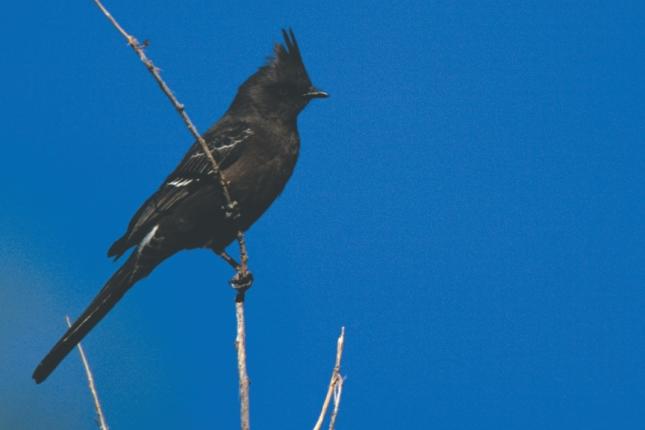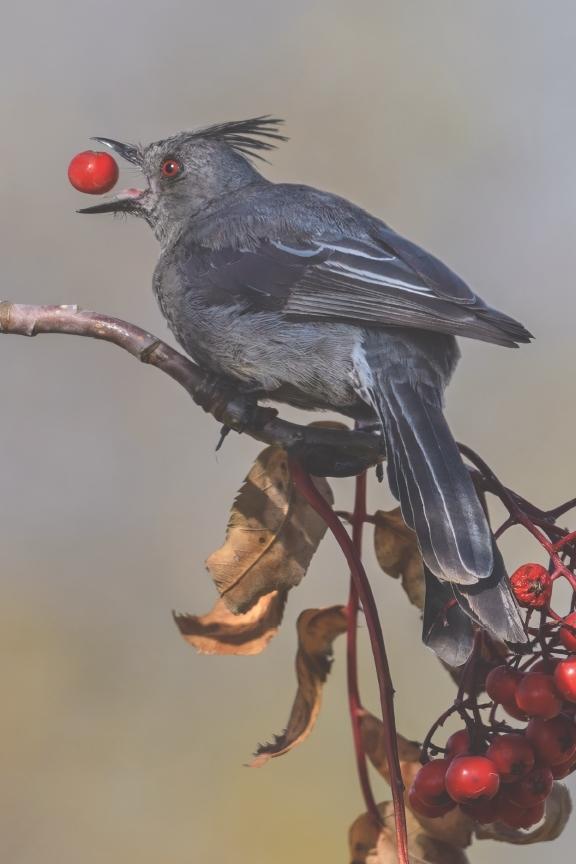Phainopeplas

- The name "Phainopepla" comes from the Greek for "shining robe," a fitting characterization of the shiny, jet-black plumage of the adult male.
- Phainopeplas are the only U.S. representative of the family Ptilogonatidae, known as “silky-flycatchers.” They are not related to North American flycatchers; their nearest common ancestors are the waxwings, which also have a glossy, silky look to their plumage. Phainopeplas are also related to Palmchats, which occur only on the island of Hispaniola.
- Phainopeplas have digestive tracts specialized for eating mistletoe fruit. These berries are low in nutrients, so the birds have to consume lots of them. The berries spend only about 12 minutes in a Phainopepla’s intestine, and the birds may eat 1,100 berries in a day.
- Phainopeplas mimic the calls of other birds, including Red-tailed Hawks, Northern Mockingbirds, Northern Flickers, Gambel’s Quail, Mourning Doves, Verdins, Acorn Woodpeckers, scrub-jays, and American Kestrels.

- Phainopeplas adjust their nesting schedule according to when their favored foods ripen. Ornithologists suspect (but have been unable to determine for sure) that some Phainopeplas nest in one location, then move to another habitat and nest again during the same year.
- The Phainopepla behaves strikingly differently in its two main habitats. In the desert, it is territorial, actively defending nesting and foraging sites, while in the woodlands it is colonial, with as many as four nesting pairs sharing one large tree.
- The Phainopepla rarely drinks water. Instead, it gets the water it needs from its diet of mistletoe.
- Adult males are glossy black with red eyes and large white patches in the wings (visible in flight). Adult females are mousy grayish brown with red eyes; immatures are similar but with brownish eyes.
Phainopeplas can be found year round in southern California.
Information provided from: All About Birds

